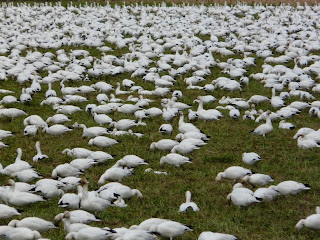
My beautiful Mother left us on Wednesday, February 18, 2009. I miss her being here in my world. I am heartbroken that I will never hear her voice again or touch her soft face. I will never kiss her or remind her once again of how special she is.
She lives in my sister and in me, within our treasured memories, within our DNA, inside our hearts, within the gifts she gave us. Her love of reading and her love of gardening are two major gifts she imparted to us both.
In the early Seattle spring my husband and I will add a beautiful plant to our garden in memory of Mother, something which will remind us of her love of flowers, her enjoyment of putting new life into the earth. Today she rests under the branches of a crepe myrtle tree which will celebrate her life in its summer blooms which thrive under the hot, Georgia sun. We placed a beautiful JW Stannard windchime in the branches which sway above her. When we visited her grave before we left Georgia soft music was playing in the stillness of the late afternoon.
Rest, dear Mother, rest. You are deeply loved and remembered always.
True gardeners cannot bear a glove
Between the sure touch and the tender root,
Must let their hands grow knotted as they move
With a rough sensitivity about
Under the earth, between the rock and shoot,
Never to bruise or wound the hidden fruit.
And so I watched my mother's hands grow scarred,
She who could heal the wounded plant or friend
With the same vulnerable yet rigorous love;
I minded once to see her beauty gnarled,
But now her truth is given to me to live,
As I learn for myself we must be hard
To move among the tender with an open hand,
And to stay sensitive up to the end
Pay with some toughness for a gentle world.
May Sarton
Originally published in A Private Mythology, 1966
Let the light of late afternoon
shine through chinks in the barn, moving
up the bales as the sun moves down.
Let the cricket take up chafing
as a woman takes up her needles
and her yarn. Let evening come.
Let dew collect on the hoe abandoned
in long grass. Let the stars appear
and the moon disclose her silver horn.
Let the fox go back to its sandy den.
Let the wind die down. Let the shed
go black inside. Let evening come.
To the bottle in the ditch, to the scoop
in the oats, to air in the lung
let evening come.
Let it come, as it will, and don’t
be afraid. God does not leave us
comfortless, so let evening come.
Jane Kenyon
From Collected Poems
Copyright © 2005 by the Estate of Jane Kenyon




